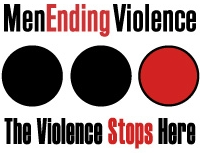This report was originally posted on the Stats Canada website, read the full report here.
In 2017, sexual violence and sexual misconduct were the centre of significant public discussion. A number of high-profile cases involving prominent figures and celebrities accused of sexual assault or misconduct received widespread media attention, and many victims’ accounts of sexual abuse and harassment were shared. In response, several social media campaigns were launched, with #MeToo being one of the most prominent, going viral in October of 2017. While most of these social media campaigns and cases originated from the United States, they arguably had an impact on the discussion of sexual violence internationally and in Canada.
The present Juristat article expands on previous analytical reports and focuses on the shifts in police-reported sexual assaults before and after #MeToo, as well as changes in victim characteristics among those who reported to police. It is important to recall that Canada’s most recent victimization survey (2014) showed that only a minority (1 in 20)Note of sexual assaults are reported to police (Conroy and Cotter 2017), and therefore police-reported sexual assault data do not reflect the true extent of sexual assault and sexual violence in Canada. In addition, because so few sexual assaults are reported to police in the first place, changes in reporting behaviour – such as new reports prompted by #MeToo – are likely to have notable impacts on police-reported data. Consequently, increases in police-reported sexual assaults during this time period may not necessarily reflect increases in the prevalence of sexual assault itself, but rather increases in reporting to police as well as changes in police practices. Nonetheless, these statistics are important in understanding the nature of sexual assaults that are reported to police in Canada, as well as informing criminal justice system planning and workload allocation given the potential increase in resources required at various levels (e.g., policing, courts, and victim services).
Rate of police-reported sexual assaults highest for young women and girls between 12 and 24 years old
Overall, victims of sexual assault were disproportionately young women and girls. Over half (55%) of sexual assault victims in 2016 and 2017 were females under 25 years of age, a proportion which was similar before and after #MeToo.
Young girls aged 15 to 17 had the highest quarterly rates of sexual assault both before and after #MeToo (Chart 4). Girls aged 12 to 14 were victims of sexual assault at an average quarterly rate of 86.2 per 100,000 population before #MeToo, increasing by 48% to 127.9 after #MeToo. Quarterly rates for girls aged 15 to 17 similarly increased from 145.3 to 191.5 (+32%), as did rates for young women between 18 and 24 years old, from 76.4 to 92.6 (+21%). Despite continuing to have relatively low rates, rates for older male victims between 35 and 54 years old nearly doubled after #MeToo (from 1.3 to 2.4 per 100,000 population).
Increase in sexual assault reports at schools, bars, and restaurants after #MeToo
Both pre- and post-#MeToo, around three in five (62% and 61% respectively) sexual assaults reported to police took place on private property.Note Incidents which occurred at a school, college, or university represented a small proportion of all incidents reported to police in 2016 or 2017 (5%). Nonetheless, incidents in these locations saw considerable increases after #MeToo, with sexual assaults on school, college, or university property nearly doubling (+87%) compared with the average number reported per quarter before #MeToo (439 versus 235 incidents). Because school attendance is seasonal the post-#MeToo period of October to December 2017 was also compared to the last three months of 2016 to control for seasonality in the data. A 59% increase in number of reported sexual assaults was observed, still making it one of the top types of sexual assault that saw a marked increase in reports after #MeToo.

Coinciding with the largest increases being observed among 12- to 17-year-old victims, the bulk of sexual assault incidents on school property (93% pre-#MeToo and 95% after) took place on non-postsecondary school grounds, most often during supervised activity, rather than at a college or university.NoteSexual assaults at a bar or restaurant were 46% higher after #MeToo than in an average quarter before #MeToo, though they still represented a small proportion of all reported sexual assaults (3% post-#MeToo).
Recently, attention to sexual violence on college and university campuses has increased, with many institutional and student-led task forces raising concerns and responding to high-profile incidents (Our Turn 2017; University of Ottawa n.d.). In Ontario, the Sexual Violence and Harassment Action Plan Act mandates that all colleges and universities have a sexual violence policy that addresses sexual violence involving students and outlines the process for responding to incidents and complaints (Bill 132 2016). Many schools below the post-secondary level have also introduced prevention programs, and as was the case with #MeToo, increased levels of awareness surrounding sexual assault and sexual violence may have had an impact on reporting practices.






I find this to be very dishonest, and propagandistic as the RCMP have yet to pursue charges against the man who sexually assaulted me in 2012. Why are the RCMP so reluctant to pursue charges of sexual assault? Is it because I am a man, and they are guilty of He-man woman hating stereotypes? Or are they so loyal to the royal family who are also steeped in rumors of sexual deviance, and murder, that they only maintain the right, when it is permitted by the royals. Thereby proving their ONLY loyalties are, in fact, to the criminal organization known as the royal family.